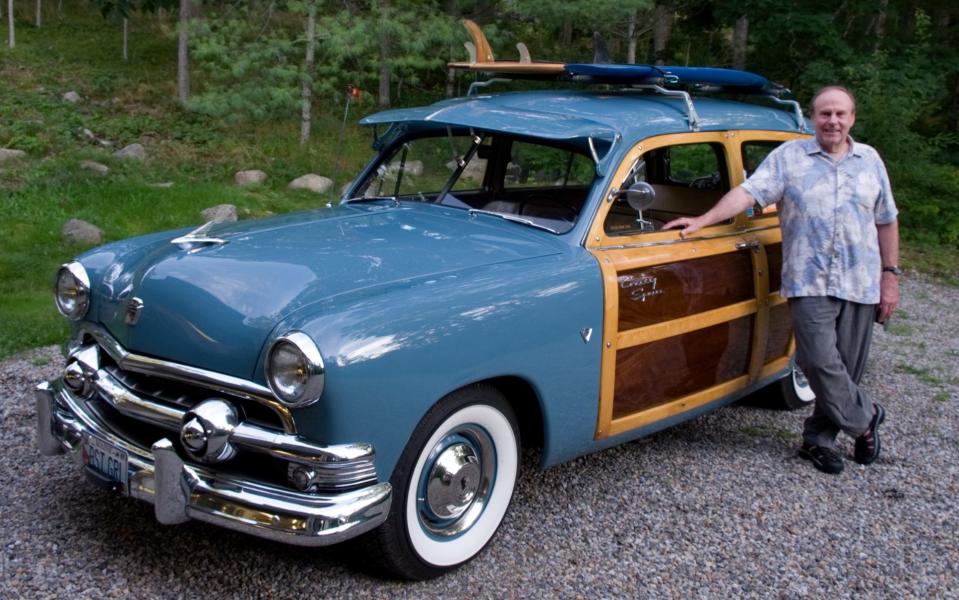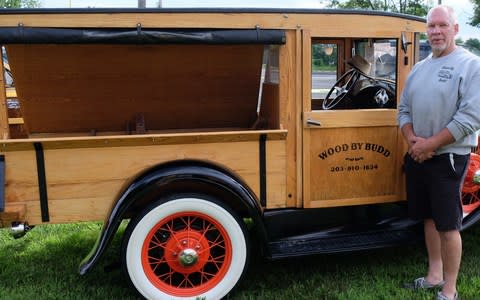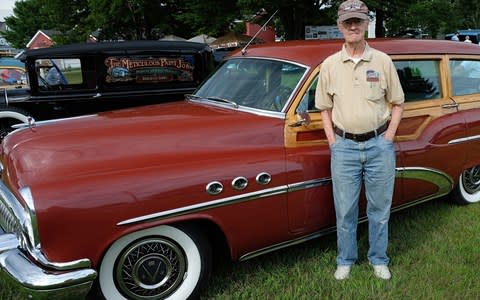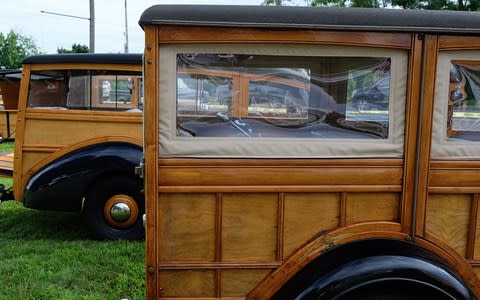Celebrating the 'woodie' station wagon in US car culture

The “woodie” – a vast, US-built shooting break or station wagon with a distinctive wooden rear frame and panels – embodied mid-20th century American affluence and now a few thousand hardy enthusiasts are keeping the tradition alive.
These cars were once commonplace in the US but now they have largely disappeared. For many, the woodie embodies the heyday of the surfing era and the glorious endless summers of the 1950s and 60s and, not surprisingly, many of today’s owners are “baby boomers” whose youth was spent listening to The Beach Boys.
The woodies date back to the late 1920s – although there is some debate whether they first appeared in 1928 or 1929. What is clear is that their manufacture ceased in the early 1950s.
It was mass production maestro Henry Ford who pioneered the use of wood for the car body, having bought more than 400,000 acres of forest in Michigan which provided abundant lumber. Other companies also offered woodies including General Motors, Nash and Chrysler. But they had to turn to outside specialist coachbuilders such as the Ionia Manufacturing Company.
An array of woods were used - primarily birch, mahogany and ash - and for decades the bodywork proved surprisingly resilient. Ford built around 8,700 woodie station wagons, the best known being the Ford Deluxe.

One of them is now owned by Sonny Perkins, 70, a retired engineer and a director of the National Woodie Club, which has more than 2,500 members. A surfer of international repute, it was perhaps inevitable he would eventually buy a woodie - especially as his grandmother had once owned one.
He told me: “When I retired I went to look for the exact same car and found one in Mexico City and I bought it from a guy in El Paso, Texas and brought it home to Maine.
“If you could find 150 woodies like mine, you would be lucky. They are becoming rarer and their value has shot up. In the 1960s you could get them for five to six hundred dollars. Now you could not get a woodie for less than $40,000.
“Because the cars cost so much it takes someone with a bit of money to buy one.”

Many woodies have quite a history: perhaps none is quite so tortuous as the tale surrounding the 1939 Ford Deluxe owned by Wayne Whitten and his wife Anne.
“My car started out in Arizona and ended up in Burlington, Vermont,” said Whitten, 71. “The owner took the engine out, went inside and died at the kitchen table. It stayed in the same place for 45 years until his wife died.
“The family had no kids and Vermont had organised an auction of the estate, they didn’t even know the car was there. The car was sold to somebody who also died and then I bought it.
“We take it to all sorts of places and people come up with their stories, from having been conceived in a woodie to remembering their uncle had had one.”

David Budd, a 56-year-old cabinet maker from Cheshire, Connecticut, had long wanted a woodie and eventually he found a 1931 Ford Huckster. “I use it to display my great grandfather’s tools,” he said. “He was also a cabinet maker, so I guess wood is in my blood as part of a family tradition.
“It turns people’s heads when they see it.”
Al Dann, 81, has owned his 1953 Buick Super for 30 years. Driving it is challenging, he said. “It is harder than a normal car, there is a little play in the steering, which makes it hard to keep straight on the highway.”

Douglas Chamberlain, 71, bought a 1951 Ford Country Squire as a present for his wife, Evelyn, who had been diagnosed with a serious illness. “Evelyn always wanted to have a woodie and we wanted to cheer her up,” he said.
“My son Geoff purchased a woodie. It was in good shape, and we restored it and we gave it to her with our grandchildren in the back.
“This car is her pride and joy. We grew up in the surfing age and this brought us back to our younger years. We have put a stereo in it and she can play The Beach Boys.”

Like other woodie owners, he treats the car with almost reverential care. It even has two surfboards on top. “Woodies are associated with the surfing culture and we grew up in that period of time. You can be 25 again. It’s bringing back the 50s and 60s culture, which we associate with fun on the beach.
“It [the woodie] is a unique piece of Americana, it is a unique piece of American history, our cultural history. It has a happy vibe to it.”
For tips and advice, visit our Advice section, or sign up to our newsletter here
More classic car stories at Telegraph Cars

 Yahoo News
Yahoo News 